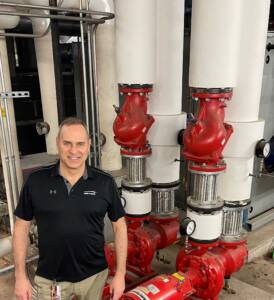
The term “decarbonization” is popping up everywhere. But what does it mean? Decarbonization is a method of climate change mitigation used for removal or reduction of carbon dioxide output into the atmosphere. Much of what I hear and read about decarbonization is focused on the cost associated with reducing CO2 emissions through efficiency upgrades, such as installing LED lighting, installing renewable energy, and/or systems to capture carbon. This fails to consider the choice of conservation, which is a behavior change, and is completely free!
Encouraging users of a facility to conserve energy by turning off items that are not being used can reduce utility use by 10 to 30 percent. The motivation for this is typically cost-related, as energy expenditures are decreased. For example, a one million dollar utility budget reduced by just 10 percent equates to $100,000 in savings. What would that amount of money do for your organization? And what about at home? How much money would you have if your electric bill was reduced by ten percent? Or twenty? Turning off lights and other energy consuming items such as TV’s and Coffee pots, as well as unplugging items that are not being used saves at home as well. What would that savings mean to your household?
Furthermore, that same 10% reduction in utility bills also results in a reduction in CO2 emissions, which is a win-win towards arresting climate change. In the last 12 months, South Colonie School District has avoided over 486,000 kilowatt hours of electricity, $127,430 in utility expenses, and 345 metric tons (or 759,669 pounds) of CO2 through energy conservation efforts.
Building energy awareness into your organization’s culture helps reduce expenses and emissions, thus demonstrating good stewardship of facilities and the environment to taxpayers and/or shareholders.

Author Bio: Jim Brown has over 25 years teaching experience at the middle school level, and has carved out a niche as a STEM teacher and a certified energy manager, specializing in energy management and auditing of educational facilities. Jim is also a NEED teacher and facilitator. Follow Jim Brown on Twitter at @MrSTEMBrown